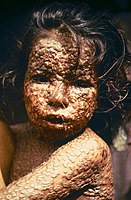
Synchronous Fluorescence Spectroscopy Combined Chemometrics for Determination of Total Phenolic Content and Antioxidant Activity in Different Tea Types.
Sign Up to like & getrecommendations! Published in 2020 at "Journal of the science of food and agriculture"
DOI: 10.1002/jsfa.10413
Abstract: BACKGROUND The aim of this study is to monitor the antioxidant activity (AA) and total phenolic content (TPC) variations of different kinds of teas depending on the infusion temperature and time by using synchronous fluorescence… read more here.
Keywords: green tea; synchronous fluorescence; tea green; combined chemometrics ... See more keywords

Tea green leafhopper-induced synomone attracts the egg parasitoids, mymarids to suppress the leafhopper.
Sign Up to like & getrecommendations! Published in 2023 at "Pest management science"
DOI: 10.1002/ps.7563
Abstract: BACKGROUND The tea green leafhopper, Empoasca flavescens is the most important pest of tea plants in China. And the Mymarid attractants based on volatiles from leafhoppers' feeding (HIPVs) and oviposition (OIPVs) were formulated and tested… read more here.
Keywords: tea green; area; suppress leafhopper; tea ... See more keywords

Involvement of histone deacetylase CsHDA2 in regulating (E)-nerolidol formation in tea (Camellia sinensis) exposed to tea green leafhopper infestation
Sign Up to like & getrecommendations! Published in 2022 at "Horticulture Research"
DOI: 10.1093/hr/uhac158
Abstract: Abstract Herbivore-induced plant volatiles (HIPVs) help the tea plant (Camellia sinensis) adapt to environmental stress, and they are also quality-related components of tea. However, the upstream mechanism regulating the herbivore-induced expression of volatile biosynthesis genes… read more here.
Keywords: tea green; tea; green leafhopper; leafhopper infestation ... See more keywords

Field evaluation of resistance to tea green leafhopper, Empoasca onukii, in tea plant
Sign Up to like & getrecommendations! Published in 2021 at "Entomologia Experimentalis et Applicata"
DOI: 10.1111/eea.13096
Abstract: The tea green leafhopper, Empoasca onukii Matsuda (Hemiptera: Cicadellidae, Typhlocybinae), is a serious pest of tea plants in East Asia. In the laboratory, tea genotypes CA278, Cd19, and Cd289 [Camellia sinensis (L.) O. Kuntze (Theaceae)]… read more here.
Keywords: field; tea green; resistance; tea ... See more keywords

Defensive Responses of Tea Plants (Camellia sinensis) Against Tea Green Leafhopper Attack: A Multi-Omics Study
Sign Up to like & getrecommendations! Published in 2019 at "Frontiers in Plant Science"
DOI: 10.3389/fpls.2019.01705
Abstract: Tea green leafhopper [Empoasca (Matsumurasca) onukii Matsuda] is one of the most devastating pests of tea plants (Camellia sinensis), greatly impacting tea yield and quality. A thorough understanding of the interactions between the tea green… read more here.
Keywords: plant; green leafhopper; tea green; plants camellia ... See more keywords

A Temperature-Dependent Model for Tritrophic Interactions Involving Tea Plants, Tea Green Leafhoppers and Natural Enemies
Sign Up to like & getrecommendations! Published in 2022 at "Insects"
DOI: 10.3390/insects13080686
Abstract: Simple Summary Tritrophic interactions have achieved much attention in research on ecology. The tea plant Camellia sinensis (L.) O. Kuntze is a major economic crop in Asian countries, especially in China. Tea plants suffer infestations… read more here.
Keywords: tea green; tritrophic interactions; tea; model ... See more keywords

Rapid Inactivation In Vitro of SARS-CoV-2 in Saliva by Black Tea and Green Tea
Sign Up to like & getrecommendations! Published in 2021 at "Pathogens"
DOI: 10.3390/pathogens10060721
Abstract: Saliva plays major roles in the human-to-human transmission of SARS-CoV-2. If the virus in saliva in SARS-CoV-2-infected individuals can be rapidly and efficiently inactivated by a beverage, the ingestion of the beverage may attenuate the… read more here.
Keywords: saliva; green tea; black tea; tea green ... See more keywords